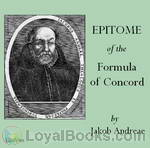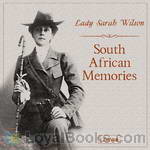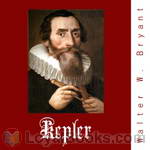|
Books Should Be Free Loyal Books Free Public Domain Audiobooks & eBook Downloads |
|
|
Books Should Be Free Loyal Books Free Public Domain Audiobooks & eBook Downloads |
|
Non-fiction |
|---|
|
Book type:
Sort by:
View by:
|
By: Antonia Isola (1876-) | |
|---|---|
 Simple Italian Cookery
Simple Italian Cookery
| |
By: Jakob Andreae | |
|---|---|
 Epitome of the Formula of Concord
Epitome of the Formula of Concord
Formula of Concord (1577) is an authoritative Lutheran statement of faith (called a confession, creed, or "symbol") that, in its two parts (Epitome and Solid Declaration), makes up the final section of the Lutheran Corpus Doctrinae or Body of Doctrine, known as the Book of Concord. The Epitome is a brief and concise presentation of the Formula's twelve articles. | |
By: Canada | |
|---|---|
 North American Free Trade Agreement, 1992 Oct. 7
North American Free Trade Agreement, 1992 Oct. 7
| |
By: Presbyterian Ladies' Aid | |
|---|---|
 Recipes Tried and True
Recipes Tried and True
| |
By: Gerard W. Bancks | |
|---|---|
 The Production of Vinegar from Honey
The Production of Vinegar from Honey
| |
By: Catherine L. Moore | |
|---|---|
 Twenty-four Little French Dinners and How to Cook and Serve Them
Twenty-four Little French Dinners and How to Cook and Serve Them
| |
By: Philip E. Muskett (-1909) | |
|---|---|
 The Art of Living in Australia ; together with three hundred Australian cookery recipes and accessory kitchen information by Mrs. H. Wicken
The Art of Living in Australia ; together with three hundred Australian cookery recipes and accessory kitchen information by Mrs. H. Wicken
| |
By: Lady Sarah Wilson (1865-1929) | |
|---|---|
 South African Memories
South African Memories
Lady Sarah Isabella Augusta Wilson was the aunt of Winston Spencer Churchill. In 1899 she became the first woman war correspondent when she was recruited to cover the Siege of Mafeking for the Daily Mail during the Boer War. She moved to Mafeking with her husband at the start of the war, where he was aide-de-camp to Colonel Robert Baden-Powell. Baden-Powell asked her to leave Mafeking for her own safety after the Boers threatened to storm the British garrison. This she duly did, and set off on a... | |
By: William Lloyd Garrison (1805-1879) | |
|---|---|
 The Abolition Of Slavery The Right Of The Government Under The War Power
The Abolition Of Slavery The Right Of The Government Under The War Power
| |
By: Scott Nearing (1883-1983) | |
|---|---|
 The New Education A Review of Progressive Educational Movements of the Day (1915)
The New Education A Review of Progressive Educational Movements of the Day (1915)
| |
By: Edmund Beckett Grimthorpe (1816-1905) | |
|---|---|
 A Rudimentary Treatise on Clocks, Watches and Bells
A Rudimentary Treatise on Clocks, Watches and Bells
| |
By: Robert Jennings (1824-1893) | |
|---|---|
 Cattle and Their Diseases Embracing Their History and Breeds
Cattle and Their Diseases Embracing Their History and Breeds
| |
By: Joseph Bell (1837-1911) | |
|---|---|
 A Manual of the Operations of Surgery For the Use of Senior Students, House Surgeons, and Junior Practitioners
A Manual of the Operations of Surgery For the Use of Senior Students, House Surgeons, and Junior Practitioners
| |
By: Joseph Coppinger | |
|---|---|
 The American Practical Brewer and Tanner
The American Practical Brewer and Tanner
| |
By: John Baron Moyle (1852-1930) | |
|---|---|
 The Institutes of Justinian
The Institutes of Justinian
| |
By: Paul Klapper (1885-1952) | |
|---|---|
 College Teaching Studies in Methods of Teaching in the College
College Teaching Studies in Methods of Teaching in the College
| |
By: Hugh Miller (1802-1856) | |
|---|---|
 Leading Articles on Various Subjects
Leading Articles on Various Subjects
| |
By: Allan F. (Allan Ferguson) Westcott (1882-) | |
|---|---|
 A History of Sea Power
A History of Sea Power
| |
By: Horatio Barber (1875-1964) | |
|---|---|
 The Aeroplane Speaks Fifth Edition
The Aeroplane Speaks Fifth Edition
| |
By: Henry F. (Henry Flagg) French (1813-1885) | |
|---|---|
 Farm drainage The Principles, Processes, and Effects of Draining Land with Stones, Wood, Plows, and Open Ditches, and Especially with Tiles
Farm drainage The Principles, Processes, and Effects of Draining Land with Stones, Wood, Plows, and Open Ditches, and Especially with Tiles
| |
By: Walter C. Runciman | |
|---|---|
 Gas and Oil Engines, Simply Explained An Elementary Instruction Book for Amateurs and Engine Attendants
Gas and Oil Engines, Simply Explained An Elementary Instruction Book for Amateurs and Engine Attendants
| |
By: Nicolas Notovitch (1858-?) | |
|---|---|
 The Unknown Life of Jesus Christ
The Unknown Life of Jesus Christ
The New Testament describes the life of Jesus, but nothing is said of his life between the ages of 14 and 29. Notovitch, like so many historians, tries to find evidence of what happened to Jesus during those years. He claims to have found the answer in an old document describing the life of Saint Issa. "The Unknown Life of Jesus Christ" is a copy of the manuscript along with Notovitch's reflections on his findings. It will take you on a journey to an unexpected land, linking people, cultures and religions you wouldn't dream of linking. | |
By: Donald Ogden Stewart | |
|---|---|
 Perfect Behavior
Perfect Behavior
A humorous guide to manners and etiquette for ladies and gentlemen in a social "crises," published in 1922. (Introduction by Samanem) | |
By: Walter W. Bryant (1865-1923) | |
|---|---|
 Kepler
Kepler
This biography of Johannes Kepler begins with an account of what the world of astronomy was like before his time, then proceeds to a look at his early years. Two chapters deal with his working relationship with Tycho Brahe. These are followed by a look at Kepler's laws and his last years. | |
By: Benjamin Franklin Cresson (1873-1923) | |
|---|---|
 Transactions of the American Society of Civil Engineers, vol. LXVIII, Sept. 1910 The New York Tunnel Extension of the Pennsylvania Railroad The Terminal Station - West
Transactions of the American Society of Civil Engineers, vol. LXVIII, Sept. 1910 The New York Tunnel Extension of the Pennsylvania Railroad The Terminal Station - West
| |
By: Pratt Food Company | |
|---|---|
 Pratt's Practical Pointers on the Care of Livestock and Poultry
Pratt's Practical Pointers on the Care of Livestock and Poultry
| |
By: F. H. (Franklin Hiram) King (1848-1911) | |
|---|---|
 Farmers of Forty Centuries; Or, Permanent Agriculture in China, Korea, and Japan
Farmers of Forty Centuries; Or, Permanent Agriculture in China, Korea, and Japan
| |
By: Frances Alice Forbes (1869-1936) | |
|---|---|
 Saint Athanasius: The Father of Orthodoxy
Saint Athanasius: The Father of Orthodoxy
A short and rather old fashioned biography a great saint. Don't expect subtlety; it's unapologetic hagiography. The saint is presented as a figure of pristine brilliance, courage and integrity and his persecutors as conniving villains. But to those who appreciate what was at stake in the controversy, Athanasius is indeed a God-sent hero. This is an informative, if quaint, introduction to a fascinating figure in history. | |
By: Samuel Edward Dibble (1882-) | |
|---|---|
 Elements of Plumbing
Elements of Plumbing
| |
By: Mary Randolph | |
|---|---|
 The Virginia Housewife
The Virginia Housewife
| |
By: Aubertine Woodward Moore (1841-1929) | |
|---|---|
 For Every Music Lover
For Every Music Lover
A series of essays for music lovers, covering many topics. From music appreciation, to violin and symphony, music education, to piano and, in fact, the very origins of music, there is sure to be something for everyone. | |
By: Martha McCulloch-Williams (1857?-) | |
|---|---|
 Dishes & Beverages of the Old South
Dishes & Beverages of the Old South
| |